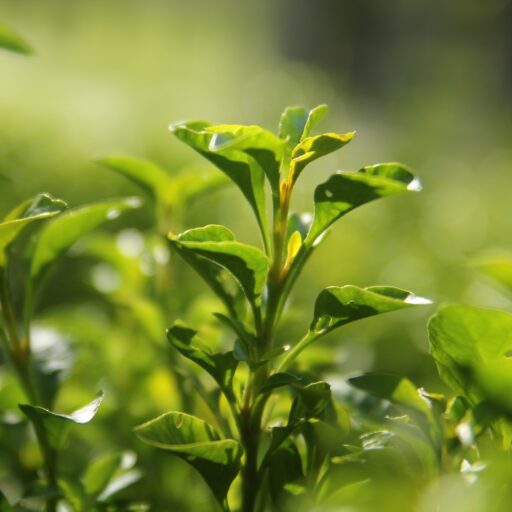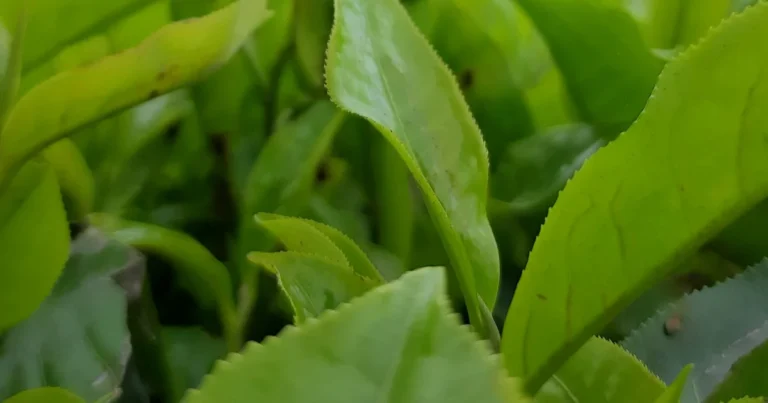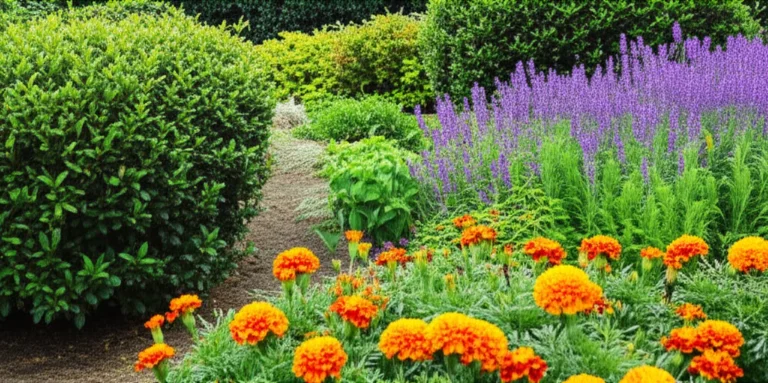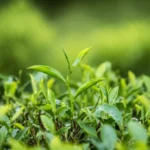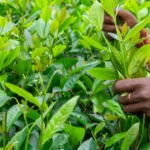Support our educational content for free when you purchase through links on our site. Learn more
What Is the Best Month to Plant Peas? 🌱 7 Expert Tips for 2025
Ever wondered why some gardeners boast endless pea harvests while others struggle with sparse pods and spindly vines? The secret often boils down to timing — planting peas in the perfect month can make all the difference between a bountiful crop and a disappointing patch. At Growing Teas™, we’ve spent years experimenting with pea planting schedules alongside our tea cultivation, and we’re excited to share the ultimate guide to planting peas at just the right moment.
Did you know peas were one of the first crops ever domesticated, thriving best in cool soil temperatures between 45°F and 70°F? But here’s the kicker: the “best month” to plant peas isn’t one-size-fits-all. It varies by region, climate, and even pea variety. Stick around as we reveal the 7 best months to plant peas by region, how to choose the right varieties, and insider tips to keep your pea patch thriving from seed to harvest. Plus, we’ll share some clever hacks for protecting your seedlings and maximizing yield — including a surprising trick involving plastic bottle cloches!
Key Takeaways
- Early spring (March-April) is the prime planting window for most temperate regions, aligning with peas’ love for cool soil.
- Succession planting every 2-3 weeks extends your harvest season and keeps peas producing steadily.
- Choose pea varieties suited to your planting month and climate, like ‘Meteor’ for early spring or ‘Sugar Snap’ for warmer conditions.
- Prepare well-drained, fertile soil with a pH of 6.0-7.5 for optimal growth and avoid overwatering to prevent root rot.
- Use natural pest control methods and simple protective covers like plastic bottle cloches to shield seedlings from frost and pests.
- Companion planting with herbs and vegetables can boost soil health and pest resistance.
- For seeds and garden supplies, trusted brands include Burpee, Johnny’s Selected Seeds, and Envii garden products.
Ready to get your peas planted right? Dive into our full guide and watch your garden flourish!
Table of Contents
- ⚡️ Quick Tips and Facts About Planting Peas
- 🌱 Peas Through Time: A Brief History and Growing Background
- 🌡️ Understanding the Best Month to Plant Peas: Climate and Soil Insights
- 📅 7 Best Months to Plant Peas by Region and Climate Zone
- 🌿 Choosing the Right Pea Varieties for Your Planting Month
- 🛠️ Step-by-Step Guide: Preparing Your Soil and Garden Bed for Peas
- 💧 Watering and Care Tips for Peas Planted in Different Months
- 🐛 Common Pests and Diseases to Watch for When Planting Peas
- 🌞 Maximizing Sunlight and Temperature for Optimal Pea Growth
- 🥗 Harvesting Peas: When and How to Pick for Peak Freshness
- 🔄 Crop Rotation and Companion Planting: Boosting Your Pea Yield
- 📊 Troubleshooting: Why Your Peas Might Not Be Thriving
- 🎯 Expert Tips and Tricks from Growing Teas™ for Successful Pea Planting
- 📚 Recommended Links for Further Pea Planting Wisdom
- ❓ Frequently Asked Questions About Planting Peas
- 🔗 Reference Links and Resources
- 🏁 Conclusion: When Is the Best Month to Plant Peas?
⚡️ Quick Tips and Facts About Planting Peas
Welcome to the world of pea planting! At Growing Teas™, while we specialize in cultivating tea plants, we’ve also rolled up our sleeves in vegetable gardening, and peas are a personal favorite. Why? Because peas are easy to grow, nutrient-rich, and a delight to harvest. Plus, they’re a cool-season crop that thrives when planted at just the right time.
Here’s a quick rundown to get you started:
- ✅ Best planting months: Generally, peas love the cool soil of early spring (March-April) or late summer for a fall harvest.
- ✅ Ideal soil temperature: Around 45°F to 70°F (7°C to 21°C) is perfect for germination.
- ✅ Soil type: Well-drained, fertile soil with a pH between 6.0 and 7.5.
- ✅ Sunlight: Full sun to partial shade.
- ✅ Planting depth: About 1 to 2 inches deep.
- ✅ Spacing: 2-3 inches apart in rows spaced 18-24 inches.
- ✅ Support: Vining varieties need trellises or netting.
- ✅ Succession planting: Stagger sowing every 2-3 weeks to extend harvest.
- ✅ Harvest time: Usually 60-70 days after planting, depending on variety.
Curious about why timing is so crucial? Keep reading — we’ll unravel the secrets of the best month to plant peas and how to get the most out of your crop! 🌱
For a deep dive into seed starting, check out our guide on Growing Teas from Seed.
🌱 Peas Through Time: A Brief History and Growing Background
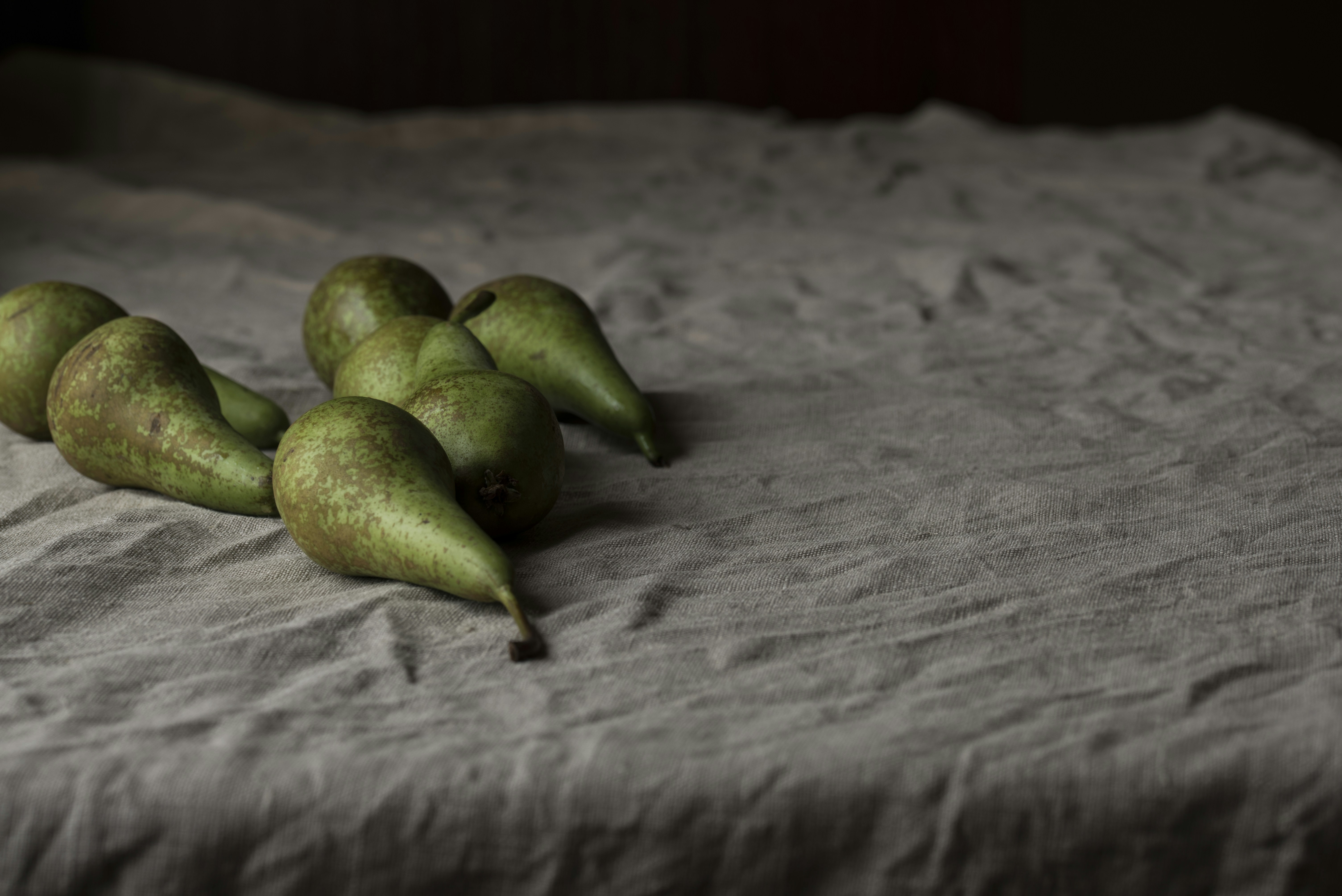
Peas (Pisum sativum) have been charming gardeners and chefs alike for thousands of years. Originating in the Mediterranean and Middle East, peas were among the first domesticated crops, cherished for their nutritional value and ease of cultivation.
A Quick Historical Snapshot
- Ancient Roots: Archaeological evidence shows peas were cultivated as early as 8000 BCE.
- Cultural Significance: In Europe, peas were a staple by the Middle Ages, often eaten dried or fresh.
- Modern Varieties: Over centuries, selective breeding gave us garden peas, snap peas, and snow peas, each with unique culinary uses.
At Growing Teas™, we love how peas complement tea gardens — their nitrogen-fixing ability enriches soil naturally, much like the symbiotic relationships tea plants enjoy.
Want to explore more about plant histories? Our History of Tea section is a treasure trove!
🌡️ Understanding the Best Month to Plant Peas: Climate and Soil Insights
Timing is everything when planting peas. The best month to plant peas depends heavily on your local climate, soil temperature, and frost dates.
Why Timing Matters
- Peas are cool-season crops; they thrive in temperatures between 55°F and 70°F (13°C to 21°C).
- Soil that’s too warm or dry can cause poor germination or stunted growth.
- Planting too late risks heat stress and poor pod development.
- Early planting risks frost damage but can be mitigated with protective covers.
Soil Temperature Guide
| Soil Temperature (°F) | Pea Seed Germination Status |
|---|---|
| Below 40 | ❌ Too cold, seeds won’t germinate |
| 45 – 70 | ✅ Ideal for germination and growth |
| Above 75 | ❌ Too warm, seeds may rot or fail |
Regional Climate Considerations
- Northern regions: Plant as soon as soil is workable, often March-April.
- Southern regions: Can plant in late winter or early fall.
- Temperate zones: Multiple plantings possible for extended harvest.
For more on soil prep, see our Green Tea Cultivation tips — many principles overlap!
📅 7 Best Months to Plant Peas by Region and Climate Zone
Let’s get specific! Here’s a breakdown of the best months to plant peas depending on where you garden:
| Region/Climate Zone | Best Planting Months | Notes |
|---|---|---|
| Northern US/Canada | March, April | Plant as soon as soil thaws |
| Pacific Northwest | March, April, September | Cool summers allow for fall planting |
| Southern US | January, February, October | Avoid summer heat |
| UK & Northern Europe | March to June | Traditional planting around March 17th |
| Mediterranean | February, March, September | Mild winters allow early planting |
| Tropical/Subtropical | Late fall to early winter (Nov-Dec) | Avoid hot, wet seasons |
Why Multiple Months?
Succession planting is a gardener’s secret weapon — sowing peas every 2-3 weeks ensures a continuous harvest instead of a glut all at once. This strategy also helps avoid pest buildup and soil depletion.
We personally swear by planting in early March here at Growing Teas™ — the peas come up strong and sweet, just in time for spring salads!
🌿 Choosing the Right Pea Varieties for Your Planting Month
Not all peas are created equal! Selecting the right variety for your planting month and climate can make or break your harvest.
Popular Pea Varieties and Their Traits
| Variety Name | Type | Days to Maturity | Best Planting Time | Notes |
|---|---|---|---|---|
| ‘Meteor’ | Shelling | 60-70 | Early spring | Disease resistant, reliable |
| ‘Blauwschokker’ | Shelling (purple pods) | 65-75 | Early spring | Unique color, sweet flavor |
| ‘Sugar Snap’ | Snap pea | 60-70 | Spring or fall | Crunchy pods, eat whole |
| ‘Snow Pea’ | Snow pea | 60-70 | Early spring | Flat pods, great for stir-fry |
| ‘Little Marvel’ | Shelling | 60 | Early spring | Compact, good for small spaces |
Matching Variety to Month
- Early March planting: Choose cold-tolerant varieties like ‘Meteor’ or ‘Little Marvel’.
- Late spring planting: Snap peas like ‘Sugar Snap’ thrive in slightly warmer soil.
- Fall planting: Snow peas and snap peas do well in cooler fall temperatures.
We recommend trying a mix of varieties to keep your garden interesting and your palate delighted! For seed sourcing, check out trusted brands like Burpee or Johnny’s Selected Seeds.
🛠️ Step-by-Step Guide: Preparing Your Soil and Garden Bed for Peas
Ready to get your hands dirty? Here’s how we prep soil for peas at Growing Teas™ — a process that ensures strong roots and bountiful pods.
Step 1: Choose the Right Spot
- Full sun or partial shade.
- Well-drained soil to prevent root rot.
- Avoid areas where peas or other legumes were grown last year to reduce disease risk.
Step 2: Test and Amend Soil
- Test soil pH (ideal 6.0-7.5).
- Add compost or well-rotted manure to enrich soil.
- Avoid high nitrogen fertilizers; peas fix their own nitrogen.
Step 3: Loosen the Soil
- Till or dig to about 8-10 inches deep.
- Remove stones, weeds, and debris.
Step 4: Create Planting Rows or Beds
- Rows spaced 18-24 inches apart.
- Make shallow furrows about 1-2 inches deep for seeds.
Step 5: Add Support Structures (if needed)
- Install trellises, bamboo canes, or netting for vining varieties.
- We love using bamboo from local suppliers — sustainable and sturdy!
Step 6: Sow Seeds
- Plant seeds 1-2 inches deep, 2-3 inches apart.
- Cover lightly with soil and water gently.
Step 7: Mulch and Water
- Apply a light mulch to retain moisture.
- Keep soil consistently moist but not waterlogged.
For more on soil care, visit our Herbal Tea Planting section — many soil prep tips apply across crops!
💧 Watering and Care Tips for Peas Planted in Different Months
Watering peas sounds simple, but timing and quantity can make a huge difference.
Watering Basics
- Keep soil evenly moist, especially during flowering and pod development.
- Avoid overhead watering to reduce fungal diseases like powdery mildew.
- Early spring plantings may need less frequent watering due to cooler temps.
- Late summer or fall plantings require more consistent moisture.
Seasonal Care Tips
| Planting Month | Watering Frequency | Additional Care Tips |
|---|---|---|
| Early Spring | Moderate | Protect seedlings from late frosts |
| Late Spring | Moderate to High | Mulch to retain moisture during warming soil |
| Summer (Fall Crop) | High | Watch for heat stress; provide shade if needed |
Personal Anecdote
At Growing Teas™, we once overwatered a batch of peas planted in April — the seedlings looked lush but developed root rot. Lesson learned: balance is key!
🐛 Common Pests and Diseases to Watch for When Planting Peas
Even peas have their nemeses. Knowing what to watch for helps keep your crop healthy.
Common Pests
- Aphids: Tiny sap-suckers that cluster on new growth.
- Pea Weevils: Larvae feed inside seeds.
- Cutworms: Can sever young seedlings at soil level.
- Slugs and Snails: Especially in damp conditions.
Common Diseases
- Powdery Mildew: White powdery spots on leaves.
- Root Rot: Caused by overly wet soil.
- Downy Mildew: Yellow spots and fuzzy growth.
- Fusarium Wilt: Causes yellowing and wilting.
Prevention Tips
- Practice crop rotation.
- Use well-drained soil.
- Avoid overhead watering.
- Introduce beneficial insects like ladybugs.
- Use organic sprays like neem oil if needed.
For organic pest control ideas, browse our Health Benefits of Tea — many tea plant extracts have natural pest-repellent properties!
🌞 Maximizing Sunlight and Temperature for Optimal Pea Growth
Peas are sun lovers but can be sensitive to heat. Here’s how to give them the best light and temperature conditions.
Sunlight Needs
- Aim for 6-8 hours of direct sunlight daily.
- In hotter climates, afternoon shade helps prevent heat stress.
Temperature Tips
- Ideal daytime temps: 55-70°F (13-21°C).
- Night temps below 40°F (4°C) can slow growth but usually not harm.
- Protect early seedlings with row covers if frost threatens.
Growing Teas™ Insight
We’ve found that planting peas near taller plants or tea bushes can provide beneficial dappled shade during hot afternoons, improving pod quality.
🥗 Harvesting Peas: When and How to Pick for Peak Freshness
Harvesting peas at the right moment is an art — pick too early, and pods are starchy; too late, and they get tough.
Signs Peas Are Ready
- Pods are plump and firm but still tender.
- Seeds inside fill the pod but haven’t hardened.
- Pods snap easily when bent.
Harvesting Tips
- Pick in the morning for best flavor.
- Use scissors or pinch pods gently to avoid damaging vines.
- Harvest every 2-3 days to encourage continuous pod production.
Storage
- Fresh peas keep about a week in the fridge.
- For longer storage, blanch and freeze.
- At Growing Teas™, we enjoy fresh peas straight from the garden — nothing beats that sweet crunch!
🔄 Crop Rotation and Companion Planting: Boosting Your Pea Yield
Smart planting strategies can supercharge your pea success.
Crop Rotation
- Avoid planting peas where legumes grew last year to prevent disease.
- Rotate with heavy feeders like corn or squash.
- Follow peas with nitrogen-loving plants since peas enrich soil.
Companion Plants
- Good companions: Carrots, radishes, cucumbers, and lettuce.
- Avoid: Onions and garlic, which can stunt pea growth.
- Peas also attract beneficial insects like hoverflies.
Fun Fact
Peas fix nitrogen through root nodules, naturally fertilizing your soil — a gift to your garden ecosystem!
📊 Troubleshooting: Why Your Peas Might Not Be Thriving
If your peas aren’t performing, here are common culprits and fixes:
| Problem | Possible Cause | Solution |
|---|---|---|
| Poor germination | Soil too warm/cold or dry | Adjust planting time; pre-soak seeds |
| Stunted growth | Nutrient deficiency or pests | Add compost; check for aphids |
| Yellowing leaves | Overwatering or disease | Improve drainage; remove affected plants |
| Powdery mildew | High humidity, poor airflow | Thin plants; use organic fungicides |
| No pods or few pods | Heat stress or poor pollination | Provide shade; hand-pollinate if needed |
🎯 Expert Tips and Tricks from Growing Teas™ for Successful Pea Planting
We’ve learned a thing or two over the years. Here are our top insider tips:
- Pre-soak seeds overnight in water to speed germination.
- Use fibre cups for indoor starts to give seedlings a head start — plant cups directly to avoid root shock.
- Employ plastic bottle cloches to protect young seedlings from frost and pests.
- Practice succession planting every 2-3 weeks for a steady supply.
- Use bamboo canes and garden netting for sturdy, eco-friendly trellises.
- Harvest regularly to encourage more pods.
- Rotate crops annually to keep soil healthy.
- Don’t forget to enjoy the process — gardening is as much about joy as yield!
📚 Recommended Links for Further Pea Planting Wisdom
- Burpee Pea Seeds Collection — Trusted seed varieties.
- Johnny’s Selected Seeds: Peas — Organic and heirloom options.
- Envii Garden Products on Amazon — For natural pest control and garden supplies.
- Royal Horticultural Society: Growing Peas — Expert UK-based advice.
- Swansons Nursery: How to Grow Peas — Practical tips and regional insights.
❓ Frequently Asked Questions About Planting Peas
When exactly should I plant peas in my region?
Plant as soon as the soil can be worked in spring, usually March-April in temperate zones. For fall crops, plant 6-8 weeks before the first expected frost.
Can I start peas indoors?
Yes! Starting peas indoors in fibre cups or seed trays 3-4 weeks before outdoor planting can give seedlings a strong start.
How do I protect peas from frost?
Use plastic bottle cloches or row covers to shield young plants from late frosts.
What’s the difference between snap peas and snow peas?
Snap peas have plump, edible pods with sweet peas inside. Snow peas have flat pods and are often used whole in cooking.
How often should I water peas?
Keep soil consistently moist but not soggy, watering deeply once or twice a week depending on weather.
🔗 Reference Links and Resources
- USDA Plant Hardiness Zone Map
- National Gardening Association: Pea Growing Guide
- University of Illinois Extension: Growing Peas
- Royal Horticultural Society: Peas
- Envii Official Website — Natural garden products mentioned in competitor content.
Ready to get your peas in the ground? Stay tuned for our final thoughts in the conclusion! 🌿
🏁 Conclusion: When Is the Best Month to Plant Peas?
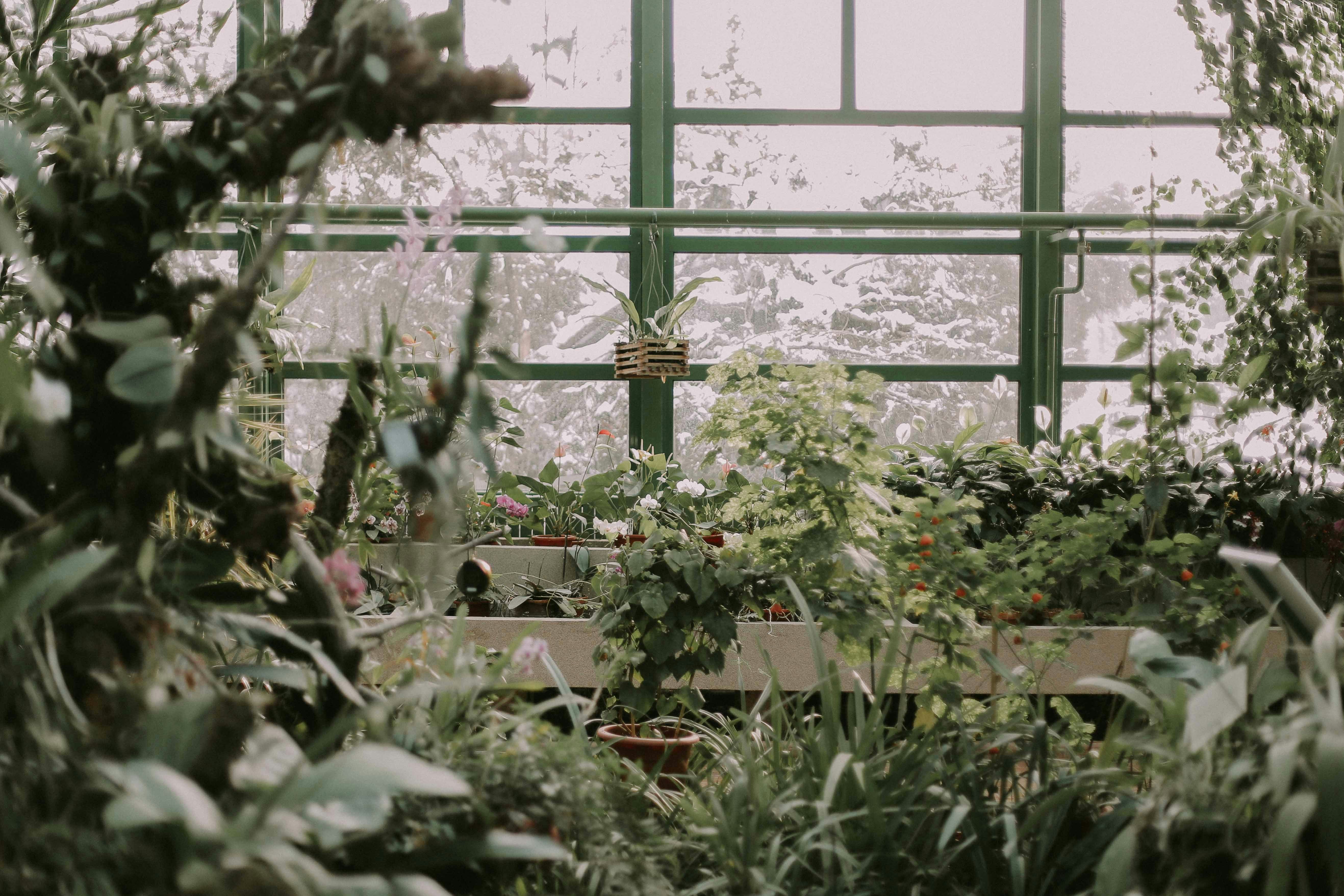
So, what’s the final verdict on the best month to plant peas? Drumroll, please… 🥁
Early spring (March to April) emerges as the golden window for most gardeners, especially in temperate climates. This timing aligns perfectly with peas’ love for cool soil and air temperatures, ensuring robust germination and sweet, tender pods. In warmer regions, late fall plantings can also yield a delightful second harvest. And don’t forget the magic of succession planting — sowing every 2-3 weeks to keep your pea patch producing steadily rather than all at once.
We’ve walked you through the why’s and how’s — from soil prep to pest management, from choosing the right variety to harvesting at peak freshness. Remember, peas are forgiving but thrive best when you respect their cool-season nature and provide consistent care.
At Growing Teas™, we wholeheartedly recommend starting your peas as soon as your soil is workable in early spring, using tried-and-true varieties like ‘Meteor’ or ‘Sugar Snap’. Protect young seedlings with simple cloches or plastic bottle mini-greenhouses, and enjoy watching those tendrils climb skyward!
By following these expert tips, you’ll be rewarded with a bountiful, delicious crop that’s perfect for fresh eating, freezing, or even blending into your own herbal teas.
Ready to get planting? Let’s make this your best pea season yet! 🌿
📚 Recommended Links for Shopping and Further Reading
Looking to gear up for your pea planting adventure? Here are some trusted products and resources to get you started:
- Pea Seeds:
- Garden Supports and Netting:
- Envii Natural Garden Products:
- Books for Deeper Dive:
- The Vegetable Gardener’s Bible by Edward C. Smith — Amazon Link
- Rodale’s Ultimate Encyclopedia of Organic Gardening — Amazon Link
Happy planting and happy harvesting! 🍃
❓ Frequently Asked Questions About Planting Peas
What is the ideal temperature for planting peas to make a soothing pea tea?
Peas prefer soil temperatures between 45°F and 70°F (7°C to 21°C) for optimal germination. This cool range encourages steady growth without stressing the seedlings. For making soothing pea tea, the quality of the pea pods and leaves is key, which depends on healthy growth during these temperature windows. Planting during early spring or late fall ensures peas develop their sweetest, most tender flavor, perfect for tea blends.
How often should I water my pea plants to maximize their health and tea-making potential?
Peas need consistent moisture but not soggy soil. Water deeply once or twice a week, depending on rainfall and temperature. During flowering and pod development, keep soil evenly moist to prevent stress that can reduce yield and flavor. Overwatering can cause root rot, while underwatering leads to tough pods. For tea-making, healthy, well-watered plants produce the best-tasting leaves and pods.
Can I grow peas in containers to create a thriving tea garden on my balcony or patio?
Absolutely! Peas adapt well to container gardening. Use a pot at least 12 inches deep with good drainage. Fill with rich, well-draining potting mix amended with compost. Choose dwarf or bush varieties like ‘Little Marvel’ for container success. Provide a trellis or netting for support. Container peas benefit from more frequent watering and feeding since soil dries faster. Growing peas alongside your tea herbs can create a vibrant, productive balcony garden.
What are some companion plants that can be grown with peas to create a diverse and thriving tea herb garden?
Peas are fantastic companions in the garden because they fix nitrogen, enriching the soil for neighbors. Great companions for a tea herb garden include:
- Carrots and radishes: They grow well alongside peas without competing.
- Lettuce and spinach: Benefit from the nitrogen boost.
- Chamomile and mint: Both attract beneficial insects and add aromatic diversity.
- Fennel and dill: Enhance pest control and flavor profiles.
Avoid planting peas near onions or garlic, which can inhibit their growth. Companion planting creates a balanced ecosystem, improving both pea health and the quality of your tea herbs.
How can I protect my pea seedlings from common pests without harsh chemicals?
Organic methods are your best bet! Use floating row covers or homemade cloches from plastic bottles to shield seedlings from birds and cutworms. Introduce beneficial insects like ladybugs to control aphids naturally. Neem oil sprays and insecticidal soaps are effective and gentle options. Maintaining good air circulation and avoiding overhead watering also reduces disease risk.
🔗 Reference Links and Resources
- Swansons Nursery: How To Grow Peas — Seattle’s Favorite Garden Store Since 1924 — Comprehensive regional guide.
- Royal Horticultural Society: Growing Peas — Expert UK advice.
- USDA Plant Hardiness Zone Map — For climate zone info.
- Burpee Official Pea Seeds — Trusted seed varieties.
- Johnny’s Selected Seeds: Peas — Organic and heirloom seeds.
- Envii Official Website — Natural garden products mentioned in competitor insights.
- National Gardening Association: Pea Growing Guide — Practical growing tips.
Ready to plant your peas and savor the fruits (or pods!) of your labor? With the right timing, care, and a sprinkle of Growing Teas™ wisdom, your pea patch will be the envy of the neighborhood. Happy gardening! 🌿
